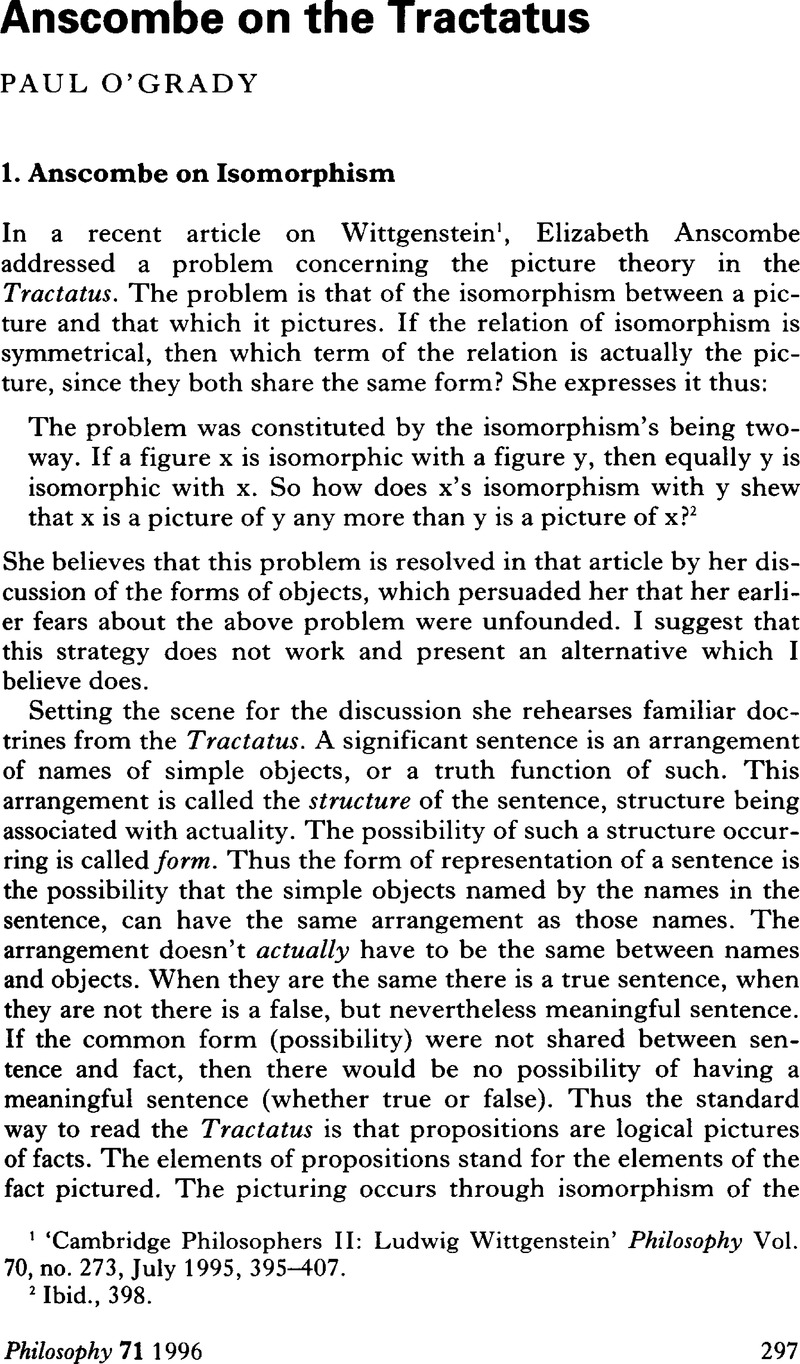No CrossRef data available.
Published online by Cambridge University Press: 30 January 2009

1 ‘Cambridge Philosophers II: Ludwig Wittgenstein’ Philosophy Vol. 70, no. 273, July 1995, 395–407.
2 Ibid., 398.
3 Ibid., 397.
4 Ibid., 398.
5 Ibid., 398.
6 3.22.
7 3.3.
8 2.021, 2.0211.
9 ‘The world is the totality of facts, not of things’. 1.1. ‘A propositional sign is a fact’ 3.14
10 Ibid. 398.
11 An Introduction to Wittgenstein's Tractatus, 2nd edn. (New York: Harper & Row, 1965), 68.
12 Storr, AnthonyJung (London: Fontana, 1973), 113.Google Scholar
13 Notebooks 1914–1916, 2nd edn., Anscombe, G. E. M. & Wright, G. H. Von (eds) (Oxford: Basil Blackwell 1979), 17(2).Google Scholar
14 Ibid., 8 (8).
15 3.1431
16 ‘What any picture, of whatever form, must have in common with reality, in order to be able to depict it—correctly or incorrectly—in any way at all, is logical form, i.e. the form of reality’. 2.18.
17 ‘Pictorial form is the possibility that things are related to one another in the same way as the elements of the picture’. 2.151.
18 ‘A picture has logico-pictorial form in common with what it depicts’. 2.2.
19 ‘A picture represents its subject from a position outside it. (Its standpointis its representational form.) That is why a picture represents its subject correctly or incorrectly.’ 2.173.
20 Ibid., 396.
21 2.151.
22 2.173.